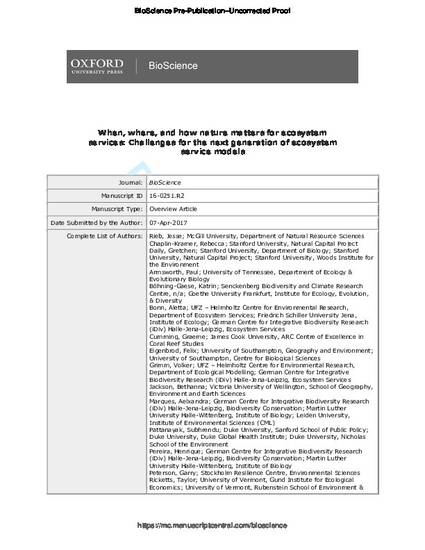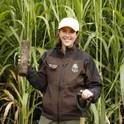
Many decision-makers look to science to clarify how nature supports human well-being. Scientists’ responses have typically focused on empirical models of the provision of ecosystem services (ES) and resulting decision-support tools. Although such tools have captured some of the complexities of ES, they can be difficult to adapt to new situations. Globally useful tools that predict provision of multiple ES under different decision scenarios have proven challenging to develop. Questions from decision-makers, and limitations of existing decision-support tools, indicate three critical research frontiers for incorporating cutting edge ES science into decision support tools: (1) understanding the complex dynamics of ES in space and time; (2) linking ES provision to human well-being; and (3) determining the potential for technology to substitute for or enhance ES. We explore these frontiers in depth, explaining why each is important and how existing knowledge at their cutting edges can be incorporated to improve ES decision-making tools.
Available at: http://works.bepress.com/lisa_schulte/80/

This is a manuscript of an article published as Rieb, Jesse T., Rebecca Chaplin-Kramer, Gretchen C. Daily, Paul R. Armsworth, Katrin Böhning-Gaese, Aletta Bonn, Graeme S. Cumming et al. "When, where, and how nature matters for ecosystem services: challenges for the next generation of ecosystem service models." BioScience 67, no. 9 (2017): 820-833. doi:10.1093/biosci/bix075. Posted with permission.